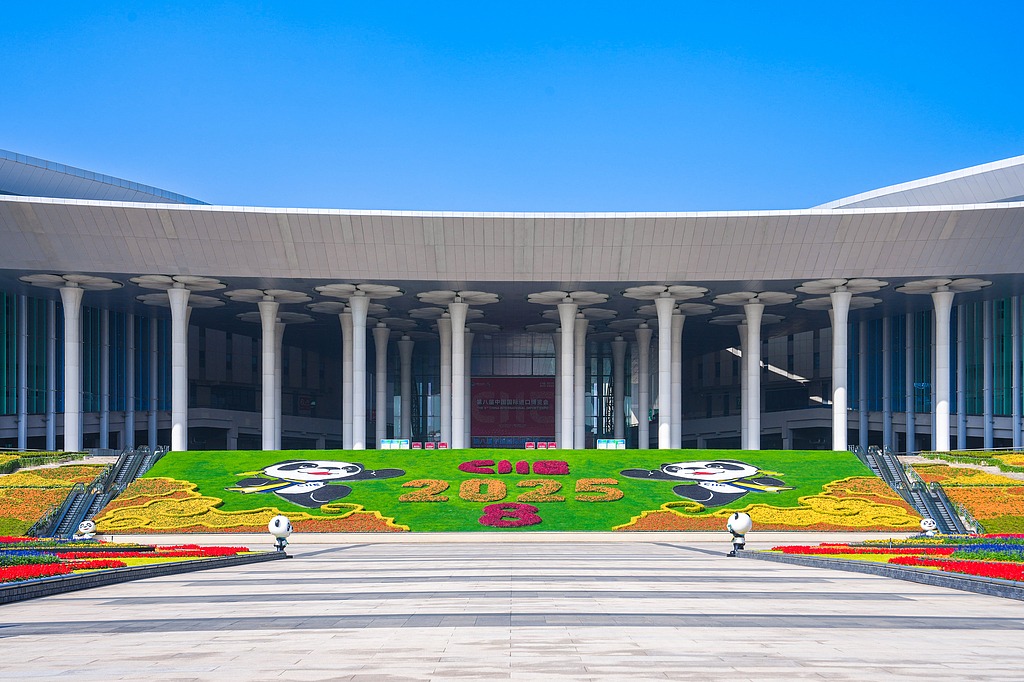Smart system mitigates human-tiger conflicts

Heilongjiang province, which hosts the largest habitat for wild Siberian tigers in China, has built its first intelligent platform for monitoring and issuing early warnings on human-tiger conflicts.
The northeastern province hosts the largest habitat for the endangered species in China, covering over 70 percent of the country.
The new system will, for the first time, allow authorities to gain a comprehensive understanding of the population and distribution of Siberian tigers across the province, providing precise data and technical support for managing human-tiger conflicts, experts said.
The remarks were made at a technical training session for the second phase of the Siberian Tiger Survey, Monitoring, Proactive Warning and Hazard Control Project, held at Northeast Forestry University in Harbin on Oct 17.
Monitoring data shows that there have been more than 400 recorded sightings of wild Siberian tigers in Heilongjiang over the past five years, with at least 38 individual tigers identified.
"In the past, we relied on manual patrols. Now we are empowered with technology," said Jiang Guangshun, a professor at the university and deputy director of the National Forestry and Grassland Administration's feline research center.
Jiang, who leads the project team from the research center, said the newly established platform consists of a monitoring network of 165 standardized survey units and 8,085 infrared automatic cameras, covering 32,000 square kilometers of forest area in the province.
It enables systematic monitoring and intelligent species identification of 13 types of medium-sized and large forest animals, including Siberian tigers, Amur leopards, and black and brown bears.
The most advanced feature of the system is its ability to use artificial intelligence algorithms to identify each Siberian tiger's unique stripe patterns, similar to facial recognition technology for humans.
"Each tiger has unique stripes, and through intelligent recognition software, we can quickly complete individual identification," Jiang said.
To address the growing issue of human-tiger conflict, the platform includes a three-level warning and control system, with demonstration projects in three high-risk villages — Huashuhe, Qiyuan and Baomashan.
The system centers on the three villages, delineating three defense lines within a 5-km radius.
"Once the system detects a Siberian tiger within a straight-line distance of 2 to 5 km from a village, it will issue a Level 3 warning," Jiang said. "A detection within 1 to 2 km will trigger a Level 2 warning, prompting preparations for deterrence measures.
"When the distance is within 1 km, a Level 1 warning will be activated, with readiness for emergency response," he said. "Different monitoring, warning and response measures will be initiated according to the warning levels."
The platform integrates various technologies, including real-time monitoring cameras, intelligent drones, gas, laser and ultrasonic deterrents, forming a full-process control system of monitoring, warning, deterrence and rescue.
The monitoring cameras, equipped with 4G and Beidou satellite dual-mode communication, can operate stably in extremely cold environments, ensuring that signal transmission is not limited by geography.
"The innovative devices, characterized by intelligence, automation and precision, ensure effective control while minimizing disturbance to humans and wildlife," Jiang said. "All technologies have undergone rigorous testing to ensure effective deterrence without harming wildlife."
"Through standardized monitoring surveys across the province, the system allows us to obtain key data on the population density, distribution and genetic characteristics of Siberian tigers and other fauna for the first time," Jiang said. "The system not only addresses the immediate issue of human-tiger conflict, but also provides scientific evidence for long-term protection strategies."
The platform also features data visualization capabilities that generate heat maps of wildlife distribution over time and space, providing intuitive references for management departments to make decisions.
Today's Top News
- Pacts epitome of South-South cooperation
- Dutch govt should act responsibly to resolve trouble of its own making: China Daily editorial
- Shenzhou XX crew's return trip delayed due to space debris risk
- Ever-evolving Canton Fair highlights China's commitment to innovation, global cooperation
- 8th China International Import Expo opens in Shanghai
- China postpones Shenzhou XX return mission






























